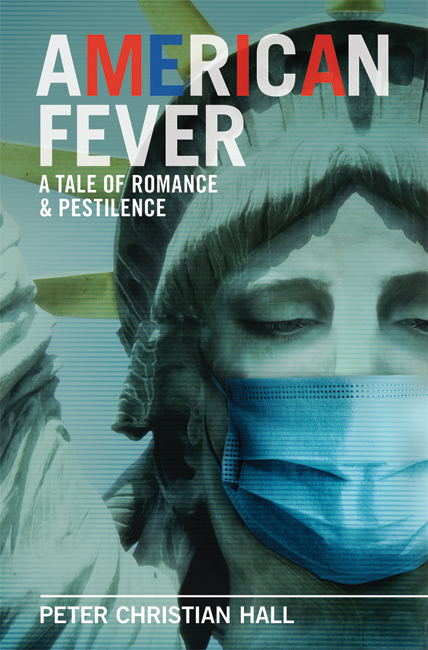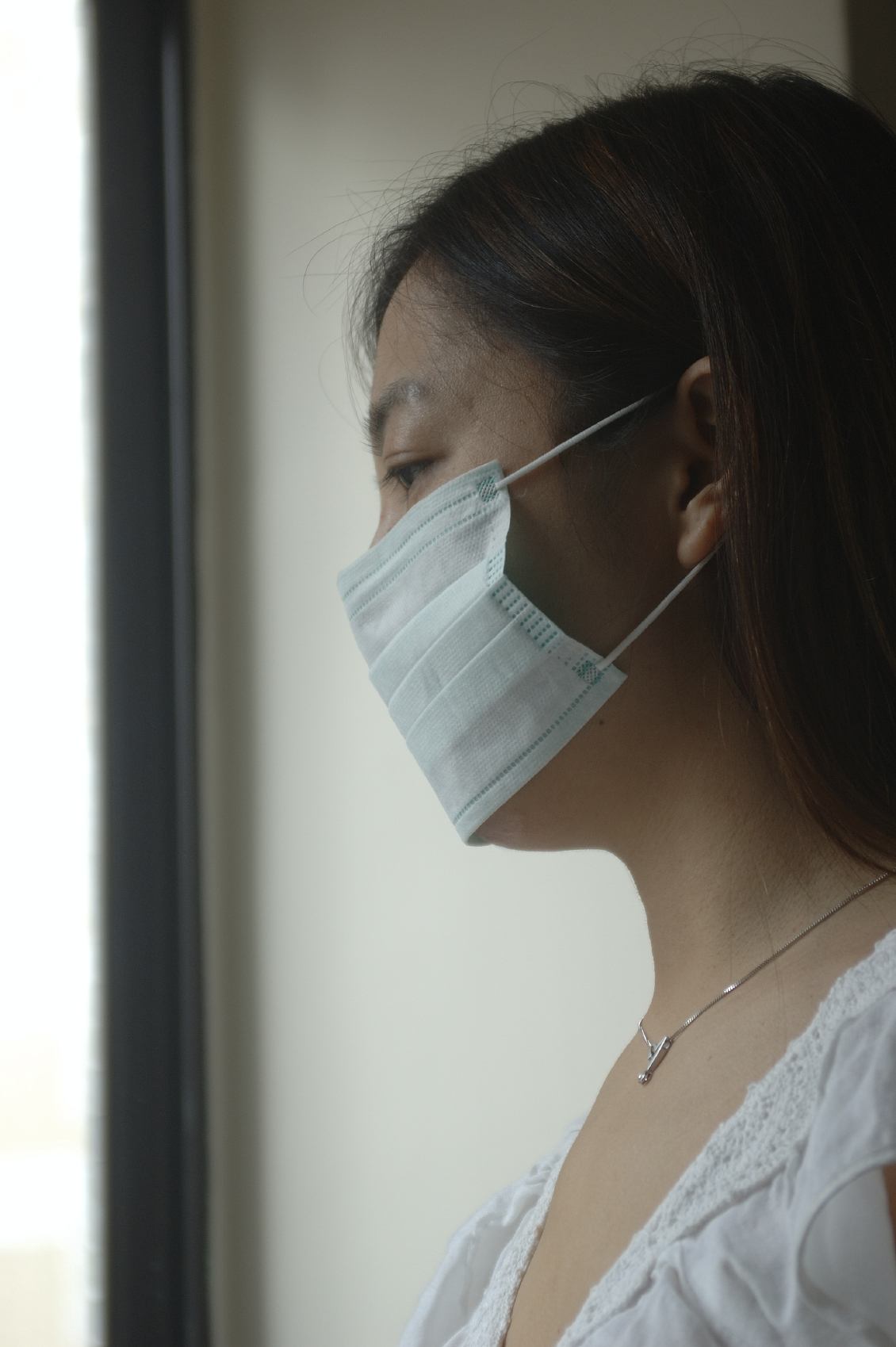Day 8: Fearsome Fomites Everywhere
The cat and I watch the neighbors—silhouettes outlined by big flat screens.
I make up lives for these human dolls. Earlier a bald man across the street looked like he was playing video games while a younger woman changed her clothes again and again. (She wasn’t naked—just kept returning to the mirror in fresh outfits that were almost clownish.) I figured she was vying for her heartless lover’s attention with clothes I might want to ignore, too. I watched with morbid fascination. Nah, more like boredom.
Regarding last night’s experiment: Since my girlfriend is proud of her gleaming incisors—and would rightfully and righteously have erupted had she seen my suggestion that she isn’t tending them—I’m certain she isn’t monitoring my posts. Sob.
 MICROBES AT OUR FINGERTIPSMy flu buddy wants me to come to meetings about fighting H5N1 in the neighborhood. The organizers sound pretty liberal: They’re planning a demonstration against the way companies have been laying off workers for the pandemic. I agree that cutting off peoples’ health insurance and cash flow exacerbates the economic plunge and probably spreads disease. I hadn’t realized layoffs were such a key item in corporate pandemic contingency plans. Still, companies have the right to fire people, just as the unemployed have the right to not buy their products. Nobody marched when they took my desk away.
MICROBES AT OUR FINGERTIPSMy flu buddy wants me to come to meetings about fighting H5N1 in the neighborhood. The organizers sound pretty liberal: They’re planning a demonstration against the way companies have been laying off workers for the pandemic. I agree that cutting off peoples’ health insurance and cash flow exacerbates the economic plunge and probably spreads disease. I hadn’t realized layoffs were such a key item in corporate pandemic contingency plans. Still, companies have the right to fire people, just as the unemployed have the right to not buy their products. Nobody marched when they took my desk away.
I’d rather not strain my voice and lungs yelling at capitalists. My mask would muffle everything. My girlfriend would miss me. Ayn Rand would curse me from her grave. So thanks anyway, buddy. (In case he’s keeping up here.)
Now, please, listen up. This is serious! Today’s lecture concerns fomites—doorknobs, light switches, pens, ATMs, or anything else that accumulates germs and viruses. (Even prayer books: God may be on your side, but do you really want a sneezing worshipper at your side?)
The average person with a simple rhinovirus cold leaves contagious particles on 35% of the surfaces he or she touches. Healthy fingers pick them up 47% of the time. Don’t rub your eyes in shock at this study. It’s dangerous.
While bacteria can multiply on fomites (even dust particles), viruses such as H5N1 must lie dormant on surfaces, basking in a special coat of fat they nick from our cells when they replicate. The stolen fat protects them till we reach out, acquire them, and then touch the vulnerable mucous membranes of our mouths, noses, and eyes.
Washing your hands really vanquishes virus. Just don’t fall for noisy ads pitching high-tech cleansers and antibacterials with impressively unpronounceable names. Some kill bacteria that keep our cells healthy, especially in our digestive tracts. Some contain Triclosan, which sunlight turns into dioxin after we rinse it into the sewer. In treated water, Triclosan also produces chloroform, which can make you dizzy and tired, damage your liver and kidneys, and perhaps trigger cancer. Specialized skin sanitizers aren't always reliable, either: Mike Coston blogged about a company whose skin-care products were seized for bacterial contamination.
If Your Soap Passes the Drug Test, It’s Not Soap
Stick to the old-fashioned stuff, which closely resembles the soaps invented and manufactured in Palestine and in Iraq back in the Seventh Century. (They even developed a special soap for shaving!) Traditional hand soap is superior. But be warned that a drug testing kit commonly used by police officers falsely detects the so-called date rape drug (Gamma Hydroxy Butyrate) in soaps from Dr. Bronner’s, Tom’s of Maine, and Neutrogena; it passed on other so-called soaps, proving they consist of detergent.
As Dr. Michael Greger explains in his Bird Flu: A Virus Of Our Own Hatching (read it online for free) hand washing doesn’t so much kill a virus as dilute it until it’s no longer infectious. Cool water is healthier, doesn’t dry out our flesh as much as hot water does.
So fight fomites! That’s all the authorities tell us. Don’t touch anything, wash your hands constantly, lest these fancy-sounding surfaces dose you. That’s exactly what they preached in 1918. There wasn’t much else to say. Oh yeah, wear a good mask! And gloves….
And goggles. Your eyes are viral portals, too. Wearing this gear keeps you from touching your mucus membranes with unclean fingers. (Sure, it itches sometimes, and many public officials— such as this former New York City Health Commissioner—think flu can’t enter through the eyes; read on.)
Wash things, too. All you need for a cheap, potent disinfectant is a tablespoon of chlorine bleach and a gallon of water. (Don’t use it on plastic, though; for that you need a milder disinfectant.) Hard surfaces nurture microbes much longer than porous ones do—as long as 24 hours—however counterintuitive that might seem. In other words, surfaces that take good fingerprints are the most dangerous. Scrub them fomites!
I miss shopping carts and subways. But I must be safe here at home … doh! The keyboard. My girlfriend uses it all day. It’s hers. What a fool I am.
Then again, we've got better ways to trade germs.



 [American Fever]
[American Fever]

